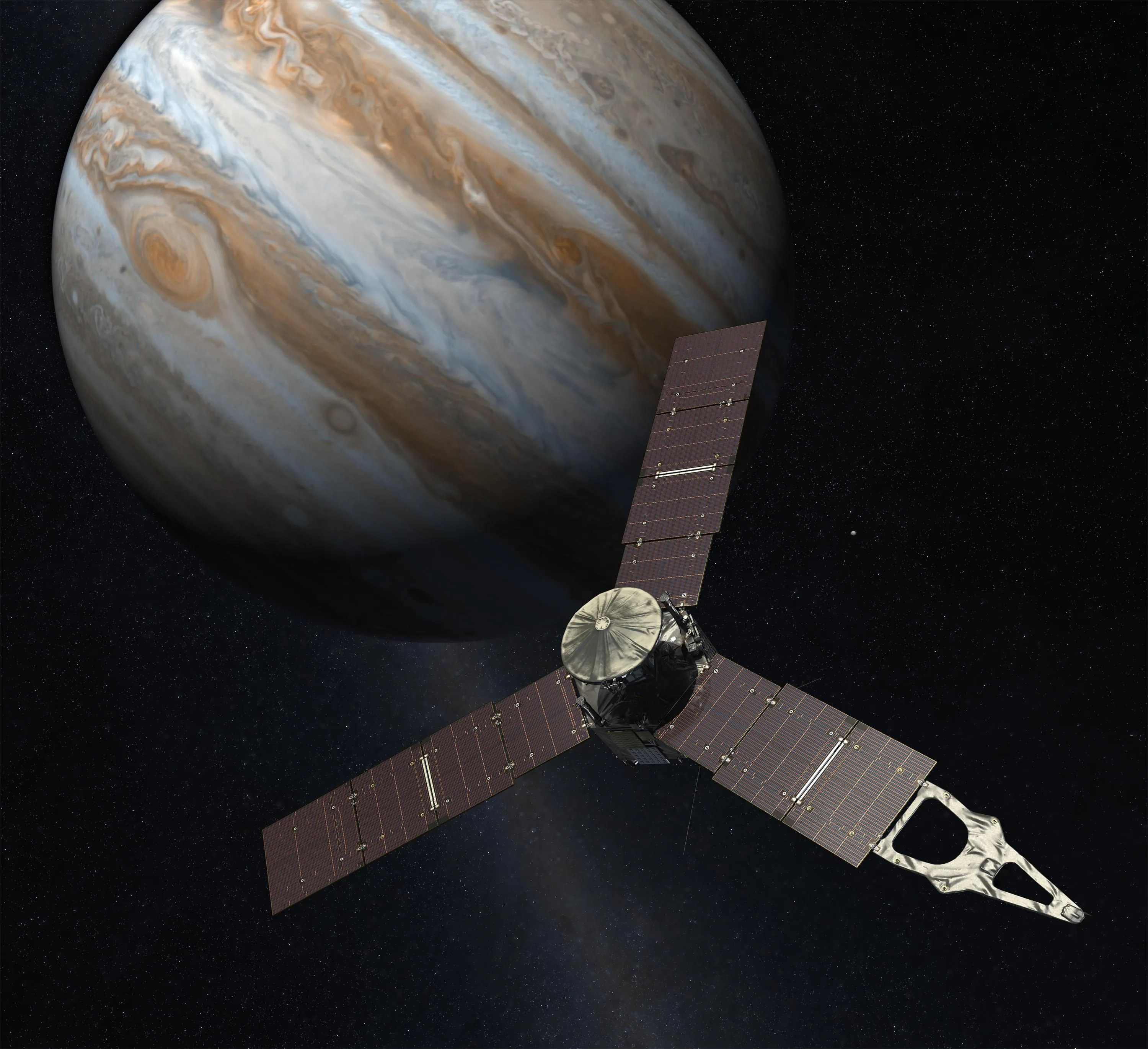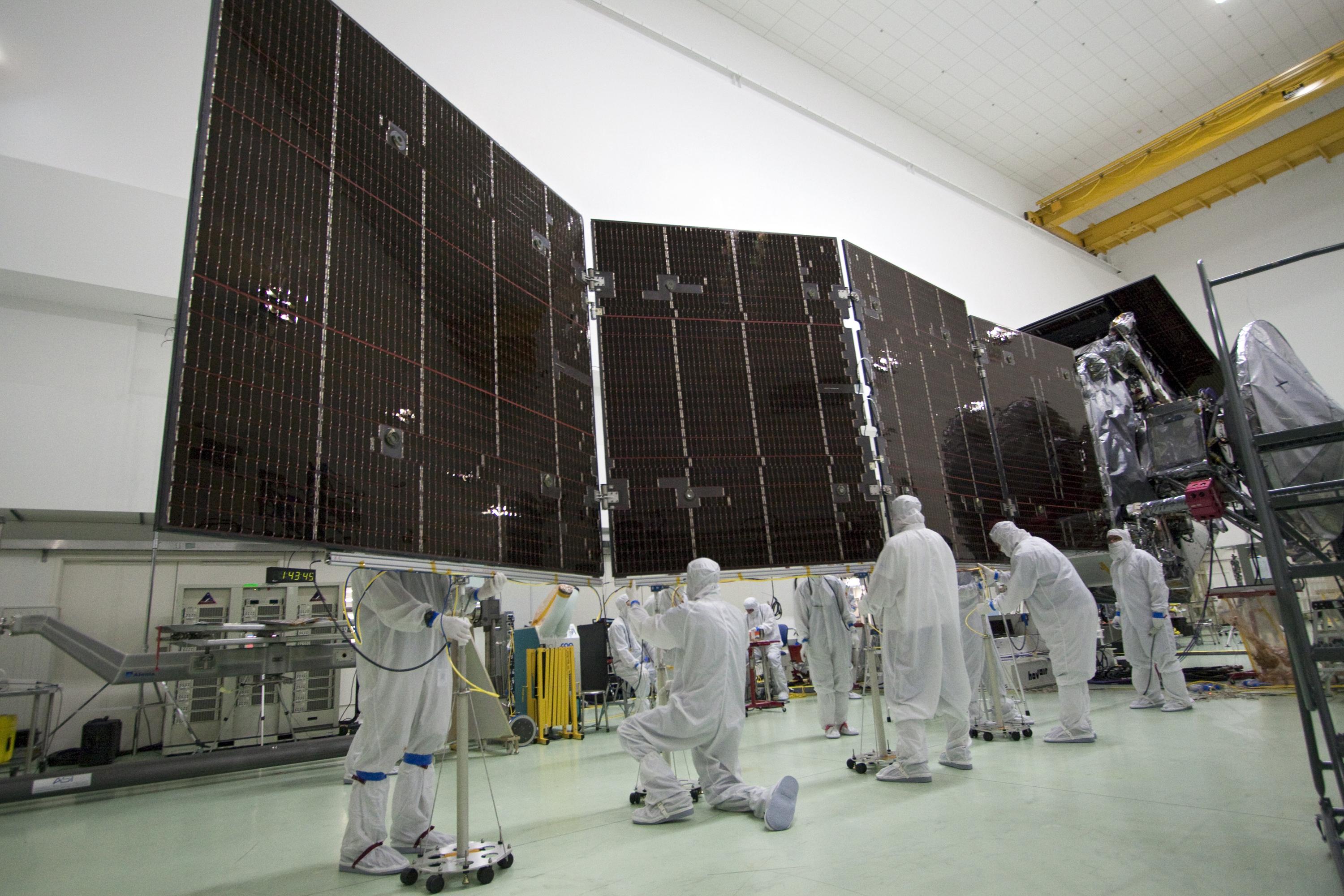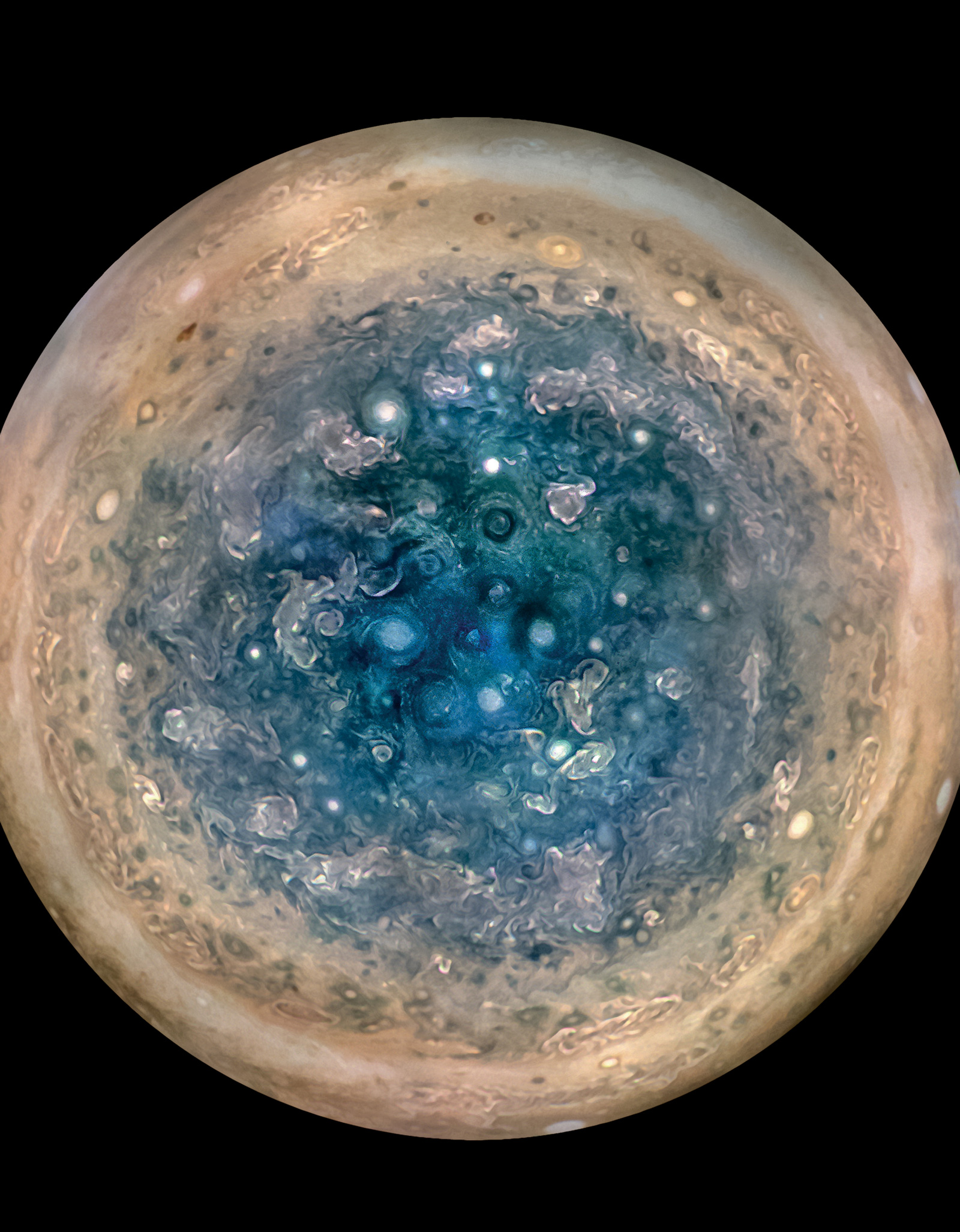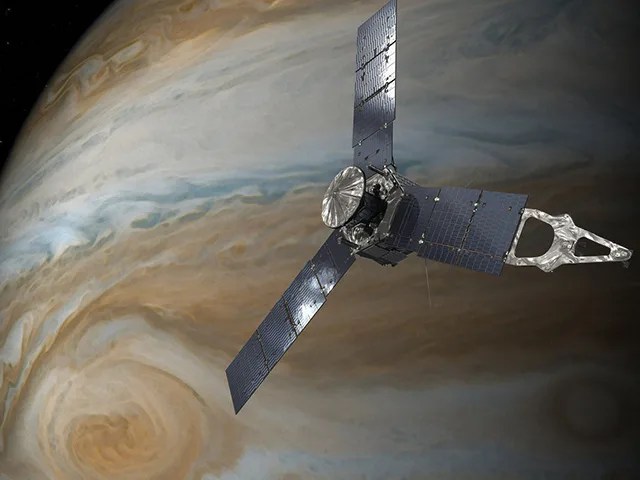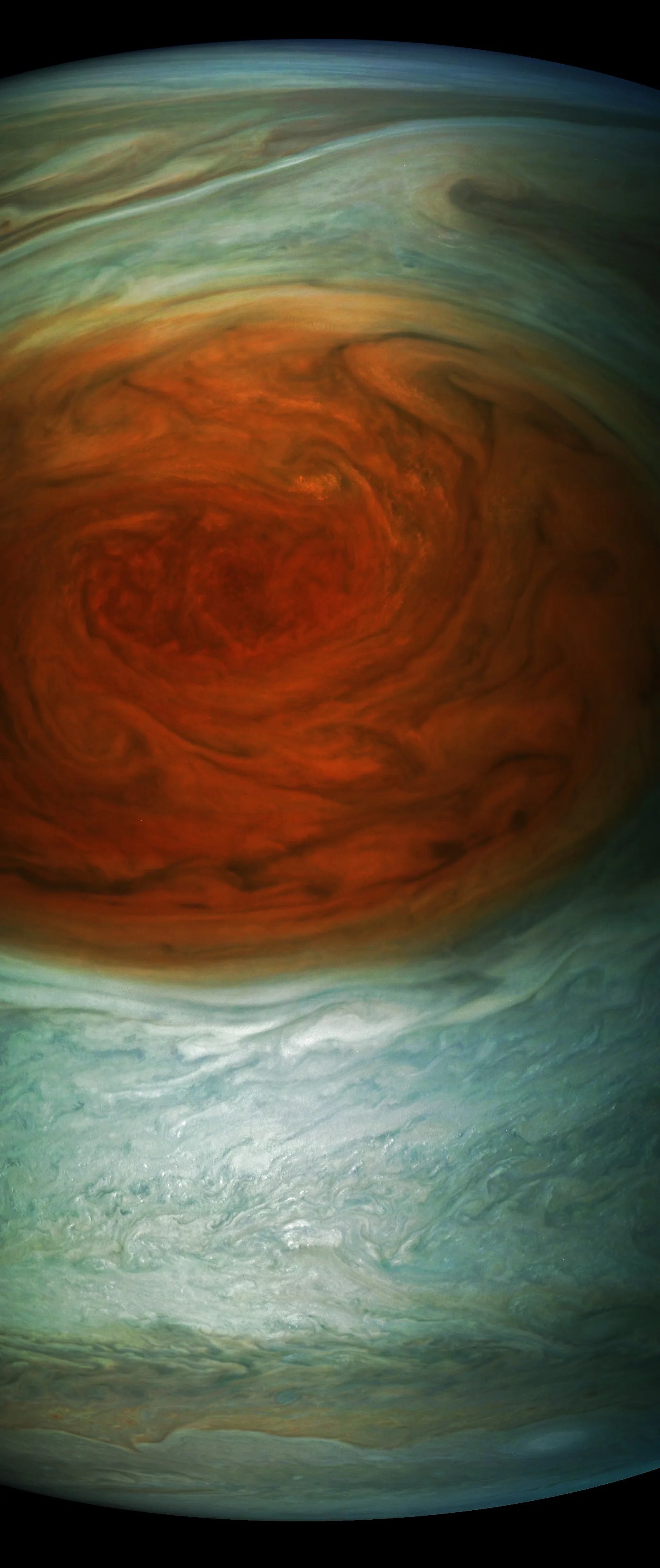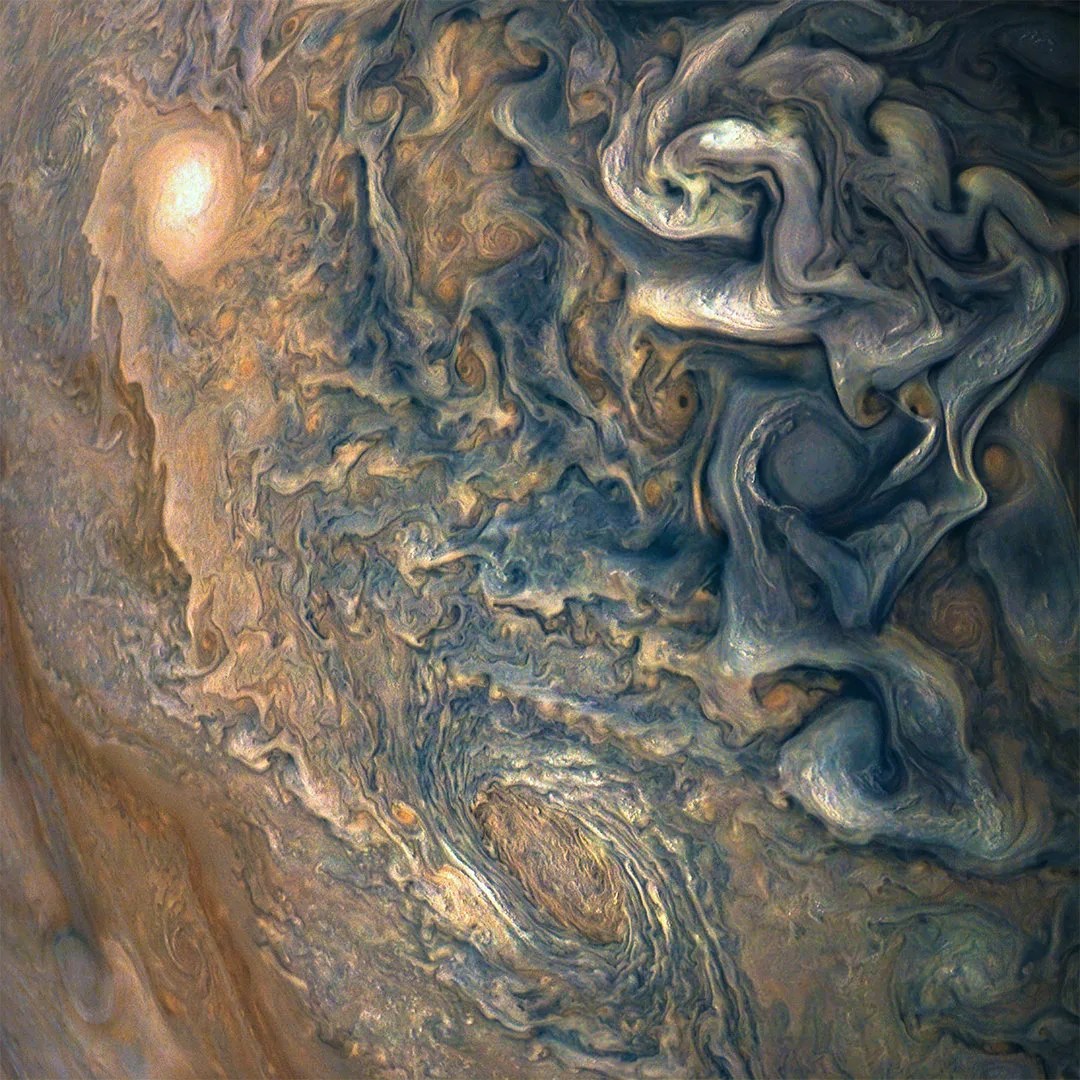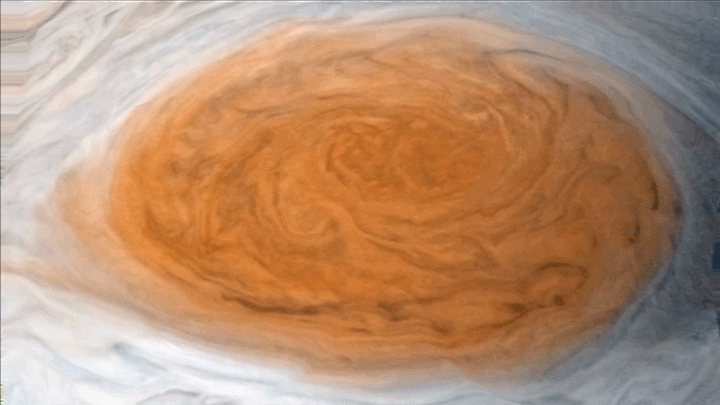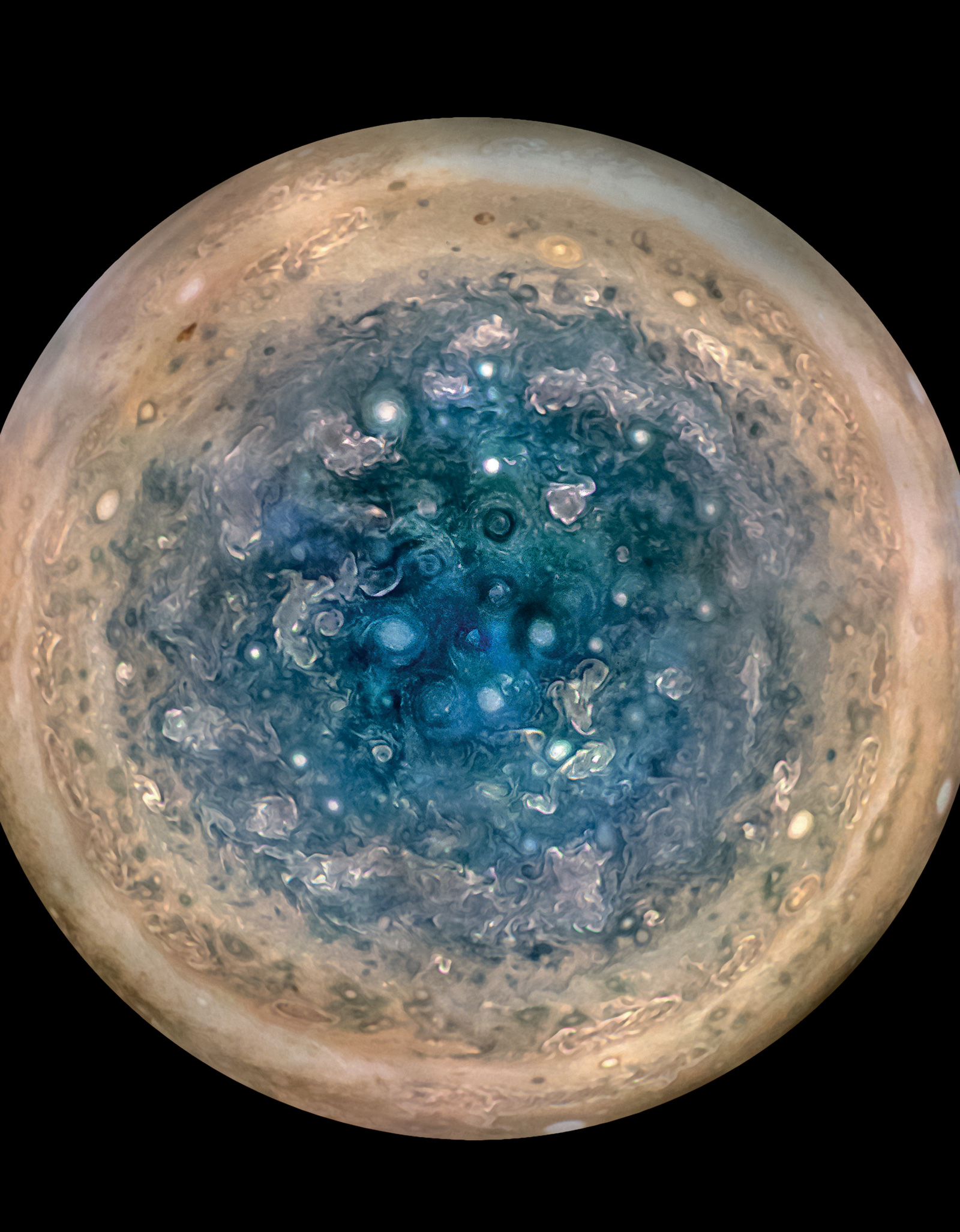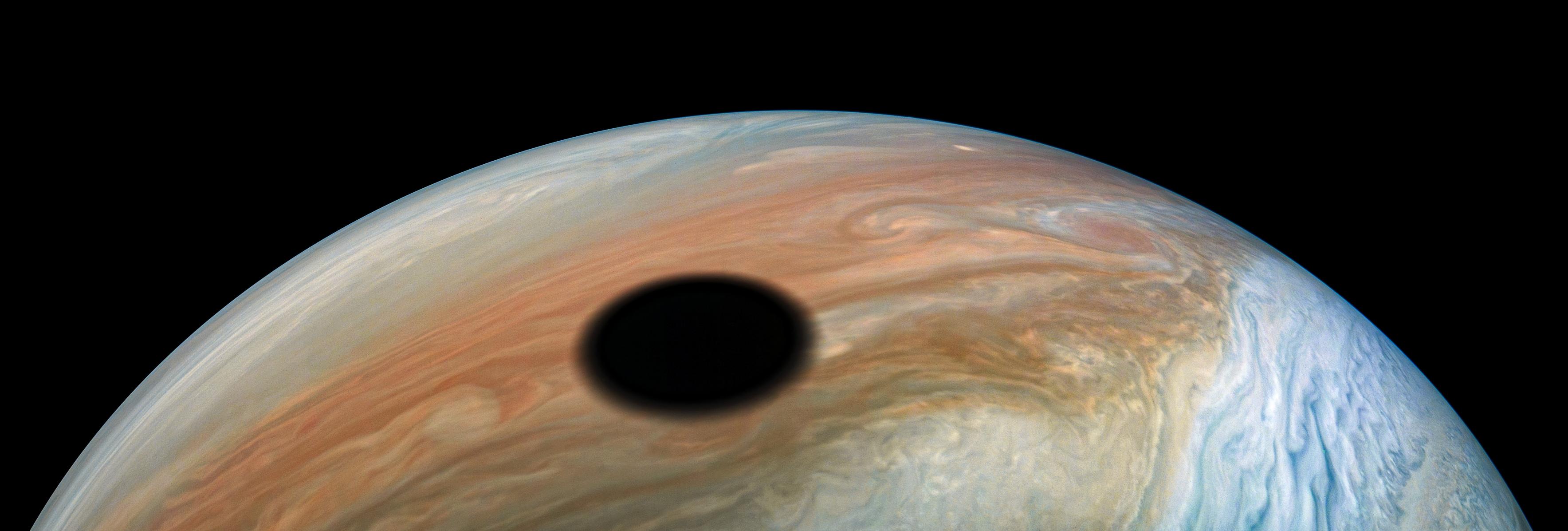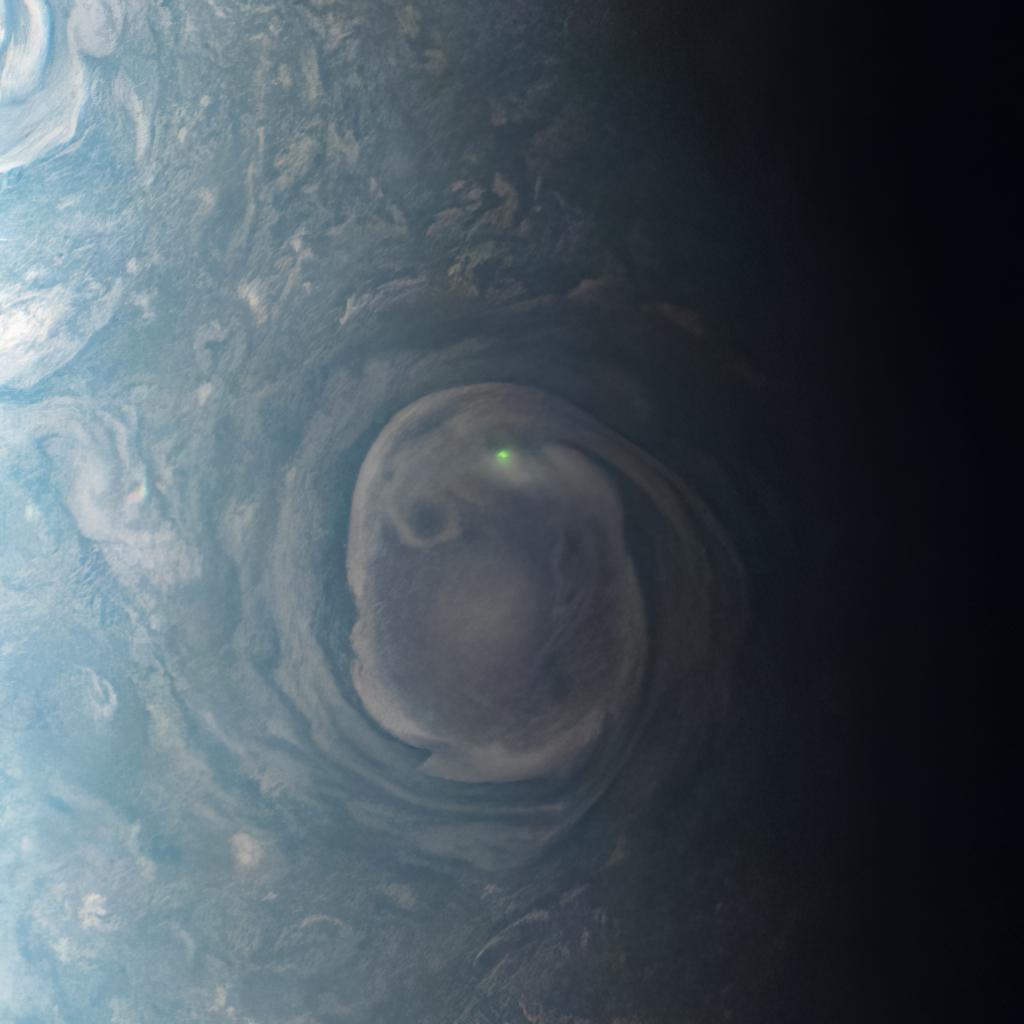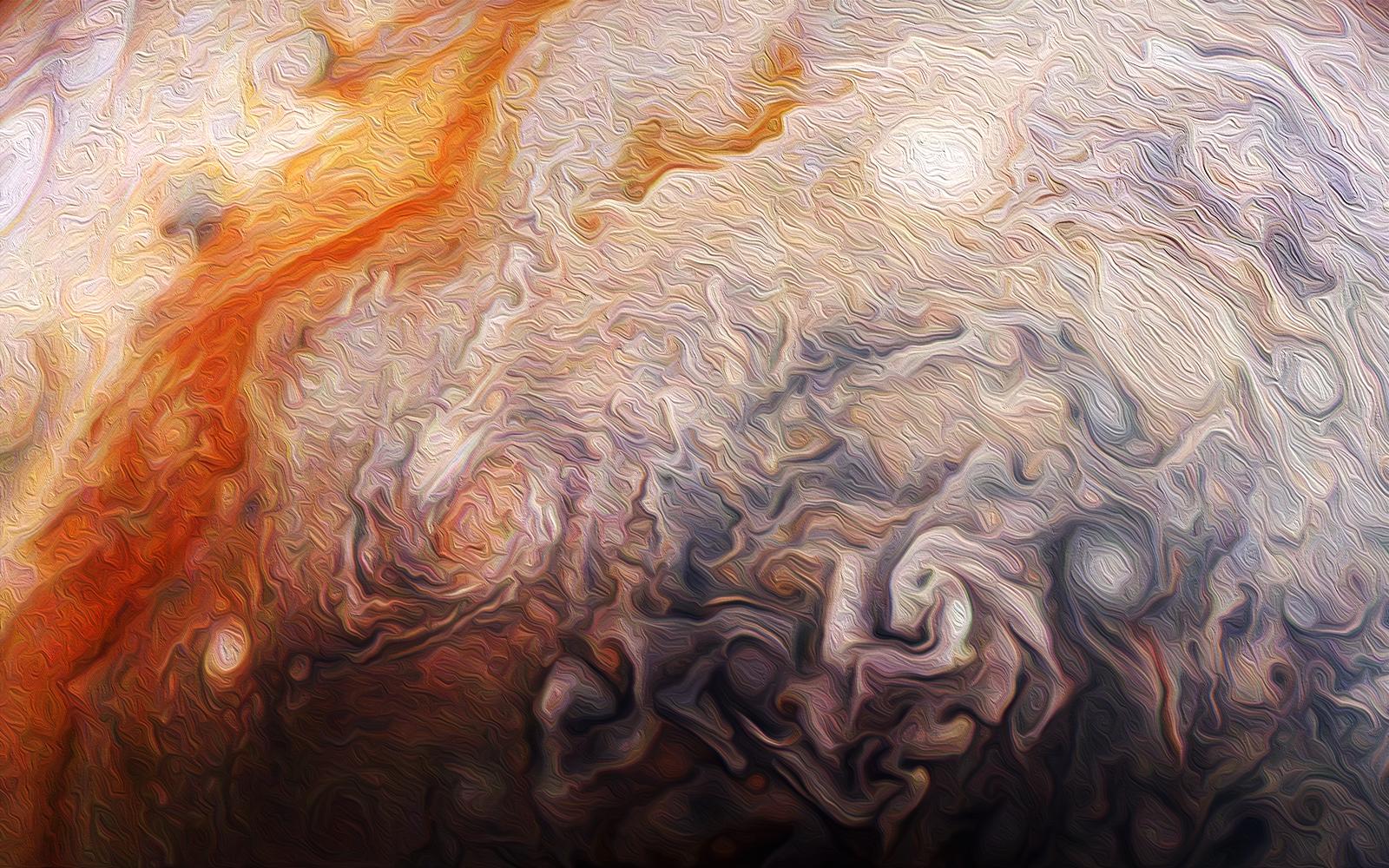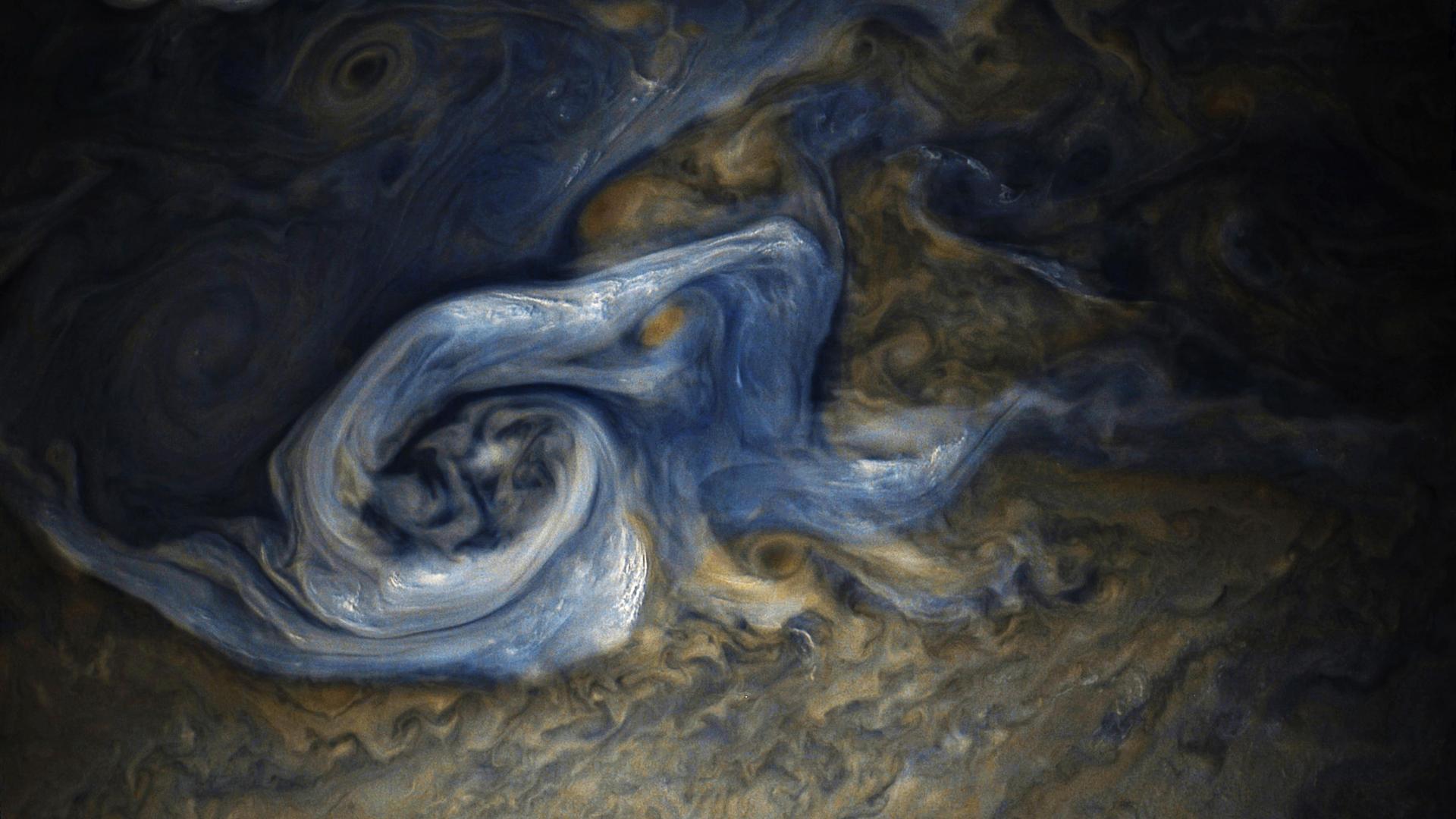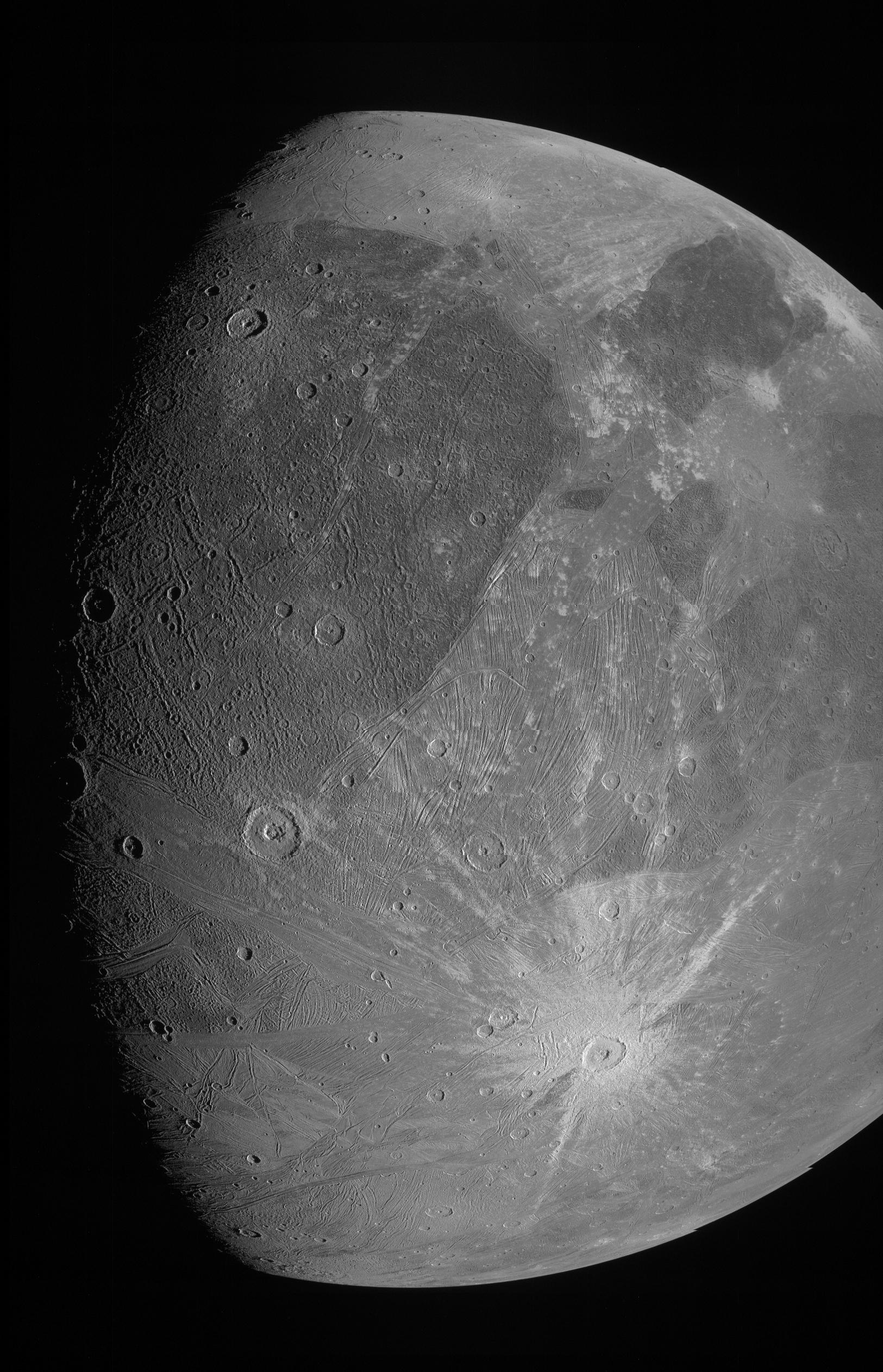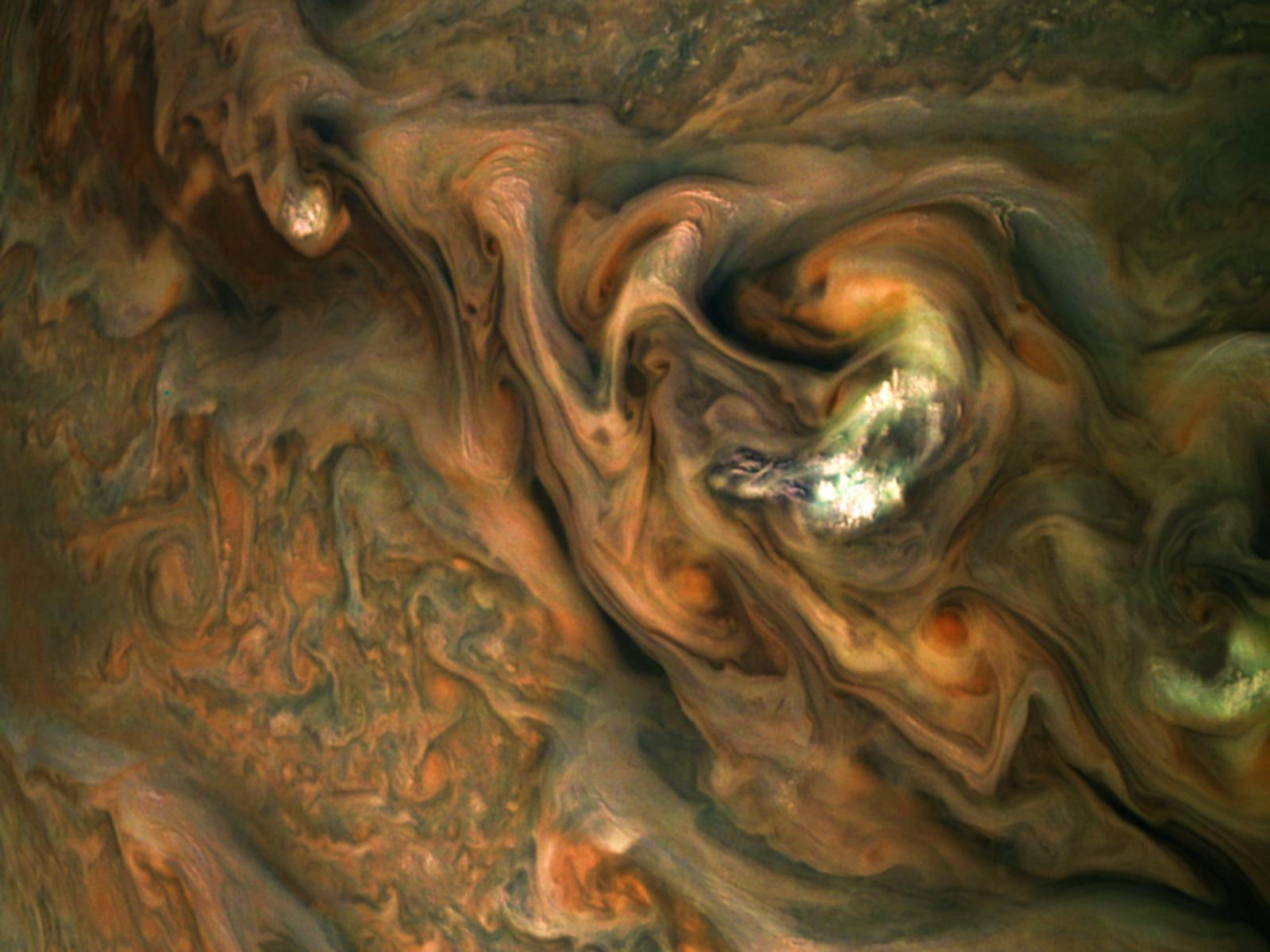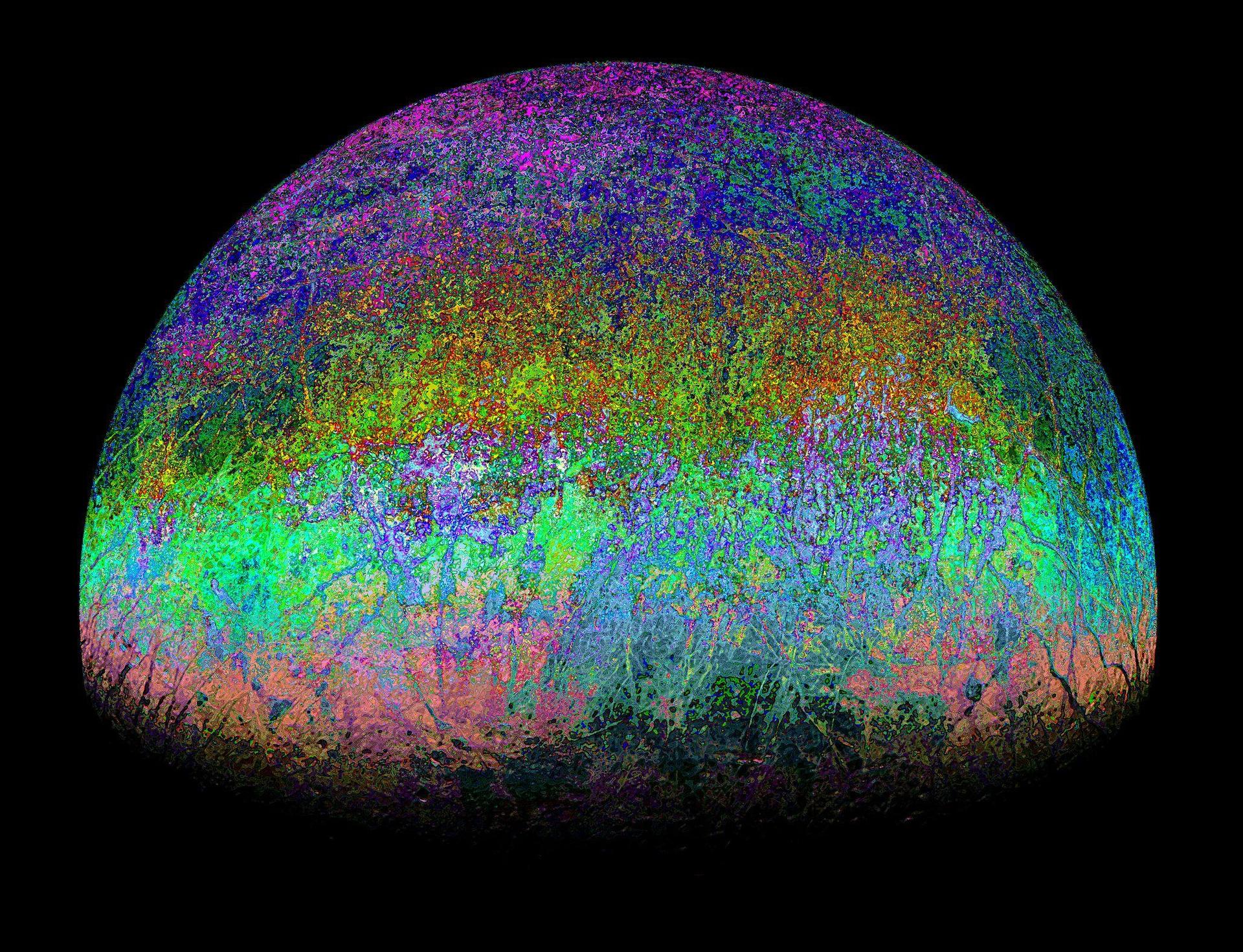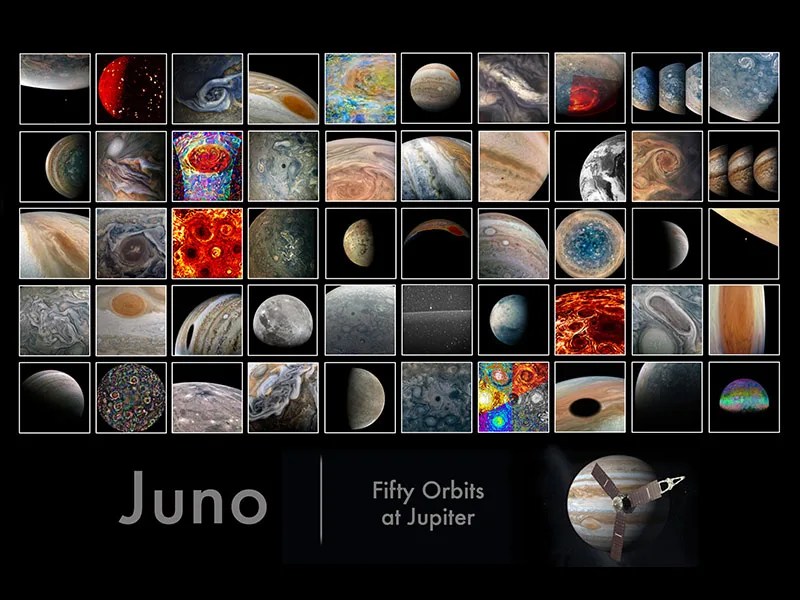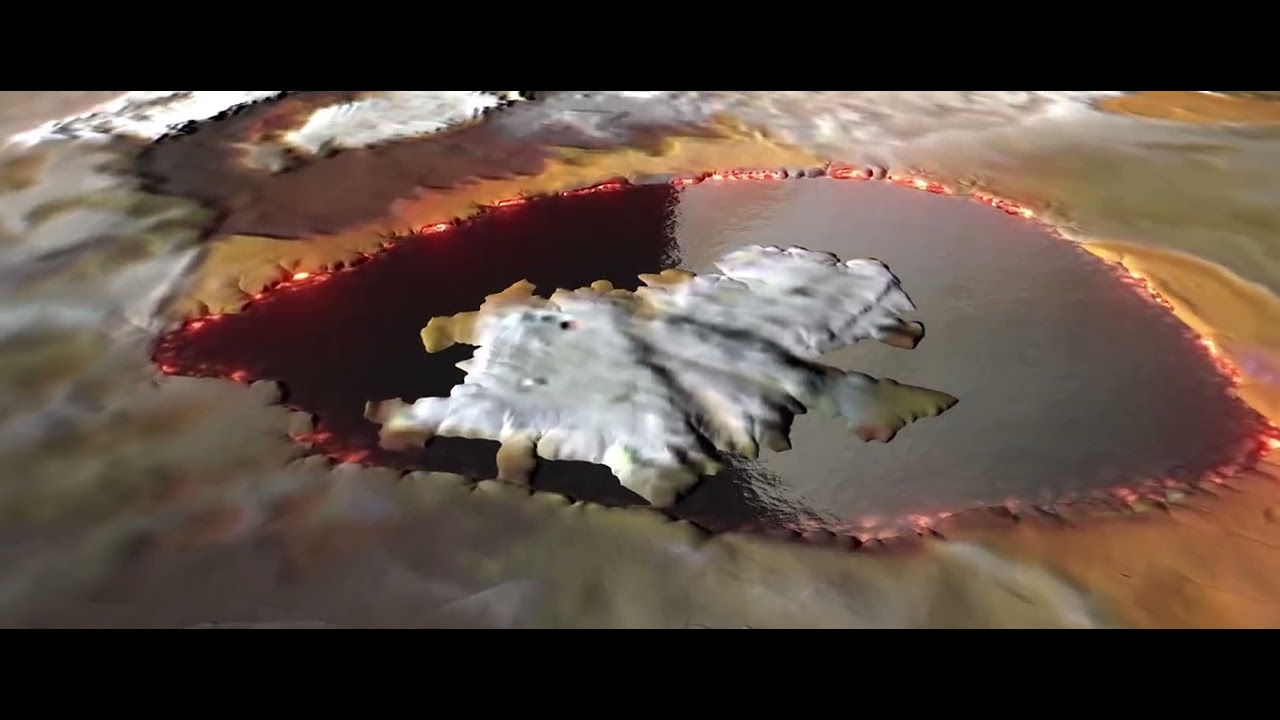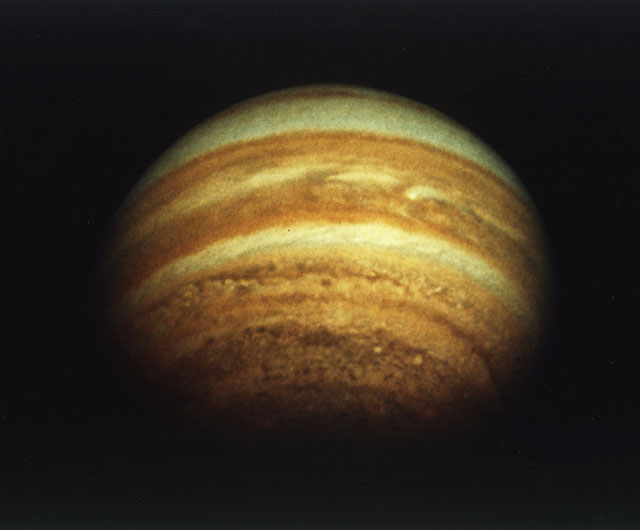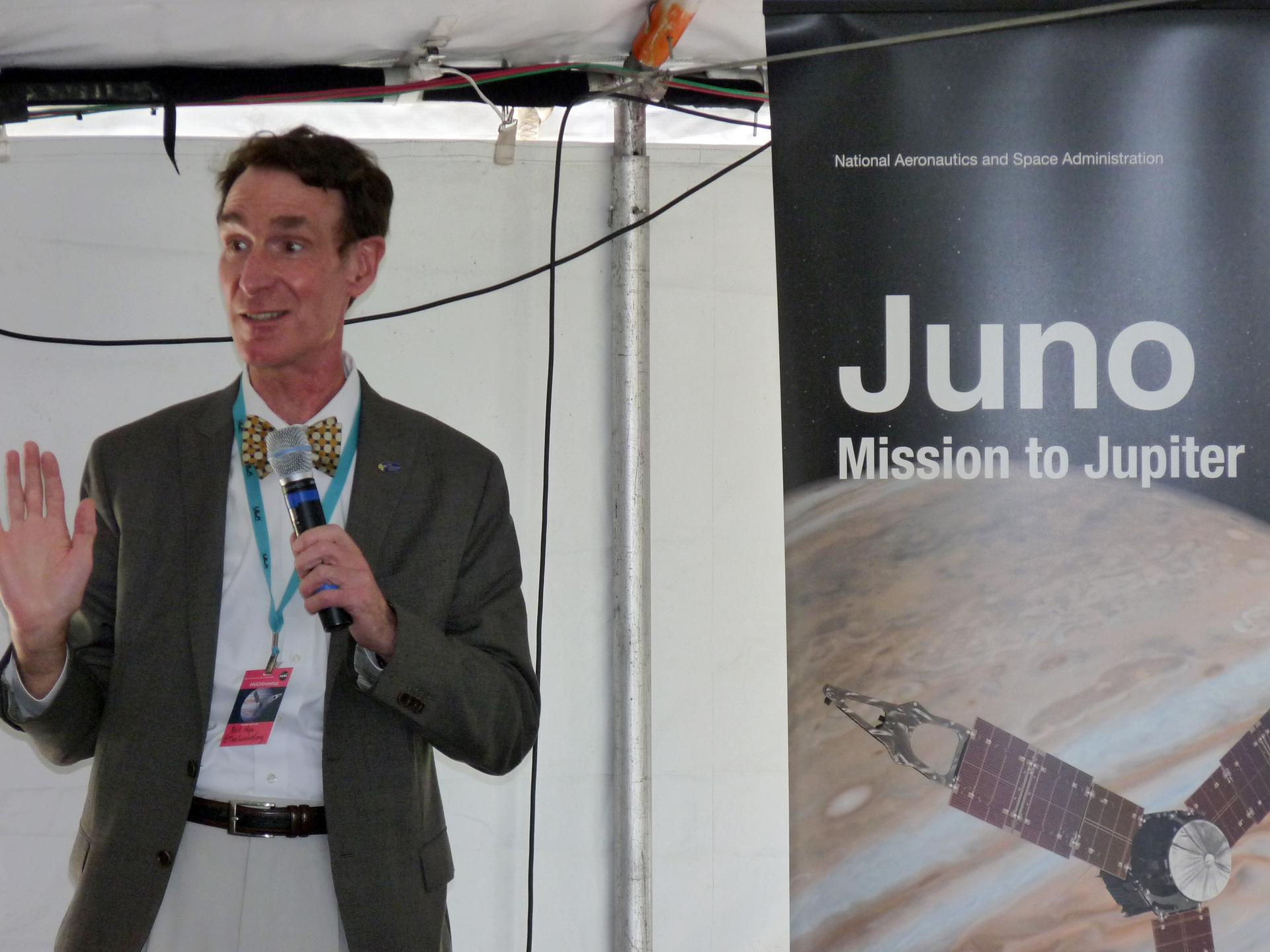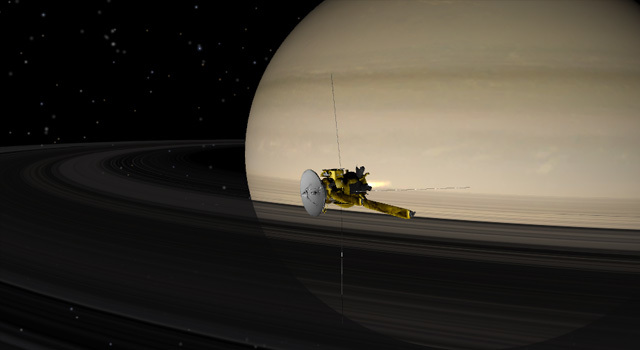Juno
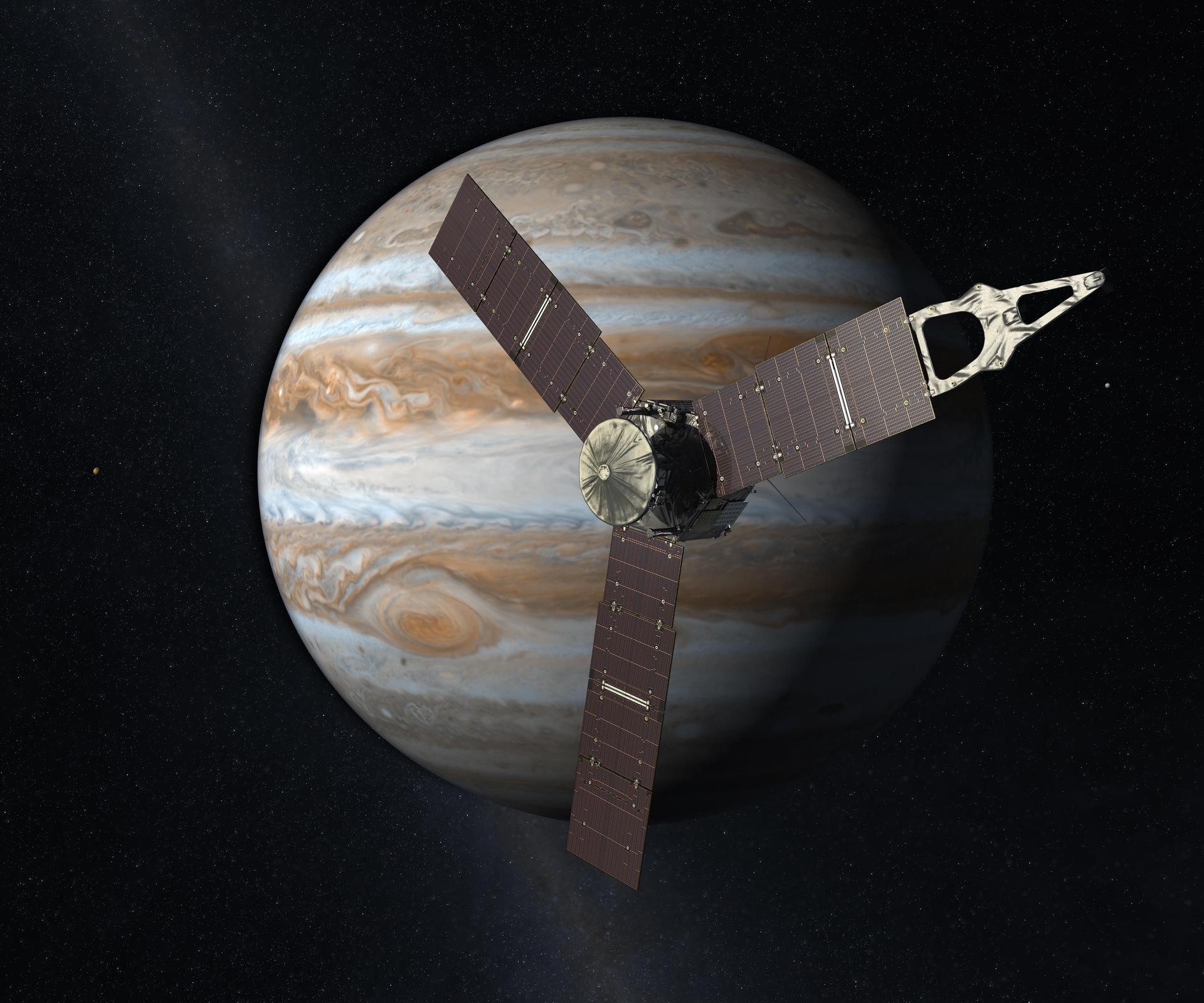
After enduring a five-year, 1.7 billion-mile journey from Earth, and evading showers of the most punishing radiation outside the Sun, Juno has provided breathtaking images and breakthrough discoveries from Jupiter and its moons. And in their quest to engage and inspire the public, the Juno mission team shares the pictures with the world, fueling citizen science and creative artistry.
From its very first orbit, stretching across 53 days from Jupiter’s cloud tops to the frontiers of its magnetic field, Juno has upended our views of the gas giant and its surroundings. The spacecraft found previously unseen networks of vast storms swirling around Jupiter’s poles, active volcanoes and lakes of lava on the tempestuous moon, Io, and answers to a decades-old question about winds on Jupiter extending hundreds of miles toward the planet’s interior. It’s scheduled to continue investigating the solar system’s largest planet through September 2025.
juno firsts
Overview
Jupiter, king of the gods in Roman mythology, was also god of the sky and storms; he once concealed himself in a veil of clouds to hide his misbehavior.
His wife, Juno, queen of the gods, noticed this sudden fog and grew suspicious; she swooped down from the heavens and broke through the haze to investigate. She could see Jupiter’s true nature.
Like its namesake, NASA’s Juno spacecraft, flying low across the clouds that encircle the planet, peers through storms and cyclones to unveil Jupiter’s secrets.
The mission’s many discoveries have changed our view of Jupiter’s atmosphere and interior, revolutionizing our understanding of the planet, and of the solar system’s formation.
Jupiter is the Rosetta Stone of our solar system. Juno is going there as our emissary – to interpret what Jupiter has to say.

scott bolton
Juno's principal investigator, Southwest Research Institute in San Antonio
'Steeple Mountain' and a Glass-Smooth Lake of Lava
Juno mission scientists transformed data from recent close passes of Io into animations highlighting a pair of dramatic features on the turbulent moon – a mountain piercing the sky like a cathedral spire, and a reflective lake of cooling lava dotted with islands. Juno cruised within about 930 miles (1,500 kilometers) of the surface during flybys of Io in December 2023 and February 2024.
Learn MoreArt and Science: A Sampler of Jupiter Images from JunoCam
Latest Juno News
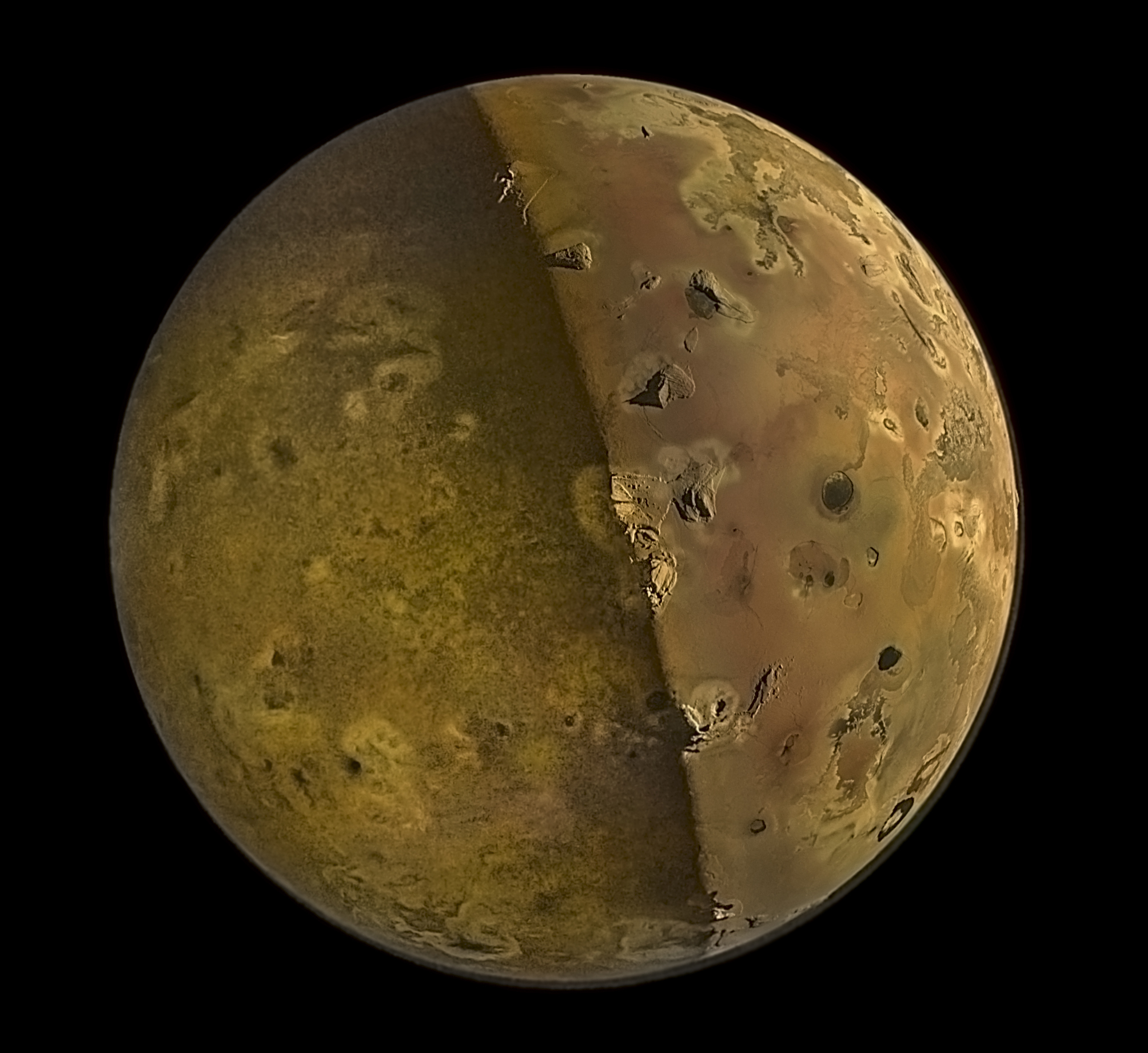
For Your Processing Pleasure: The Sharpest Pictures of Jupiter’s Volcanic Moon Io in a Generation
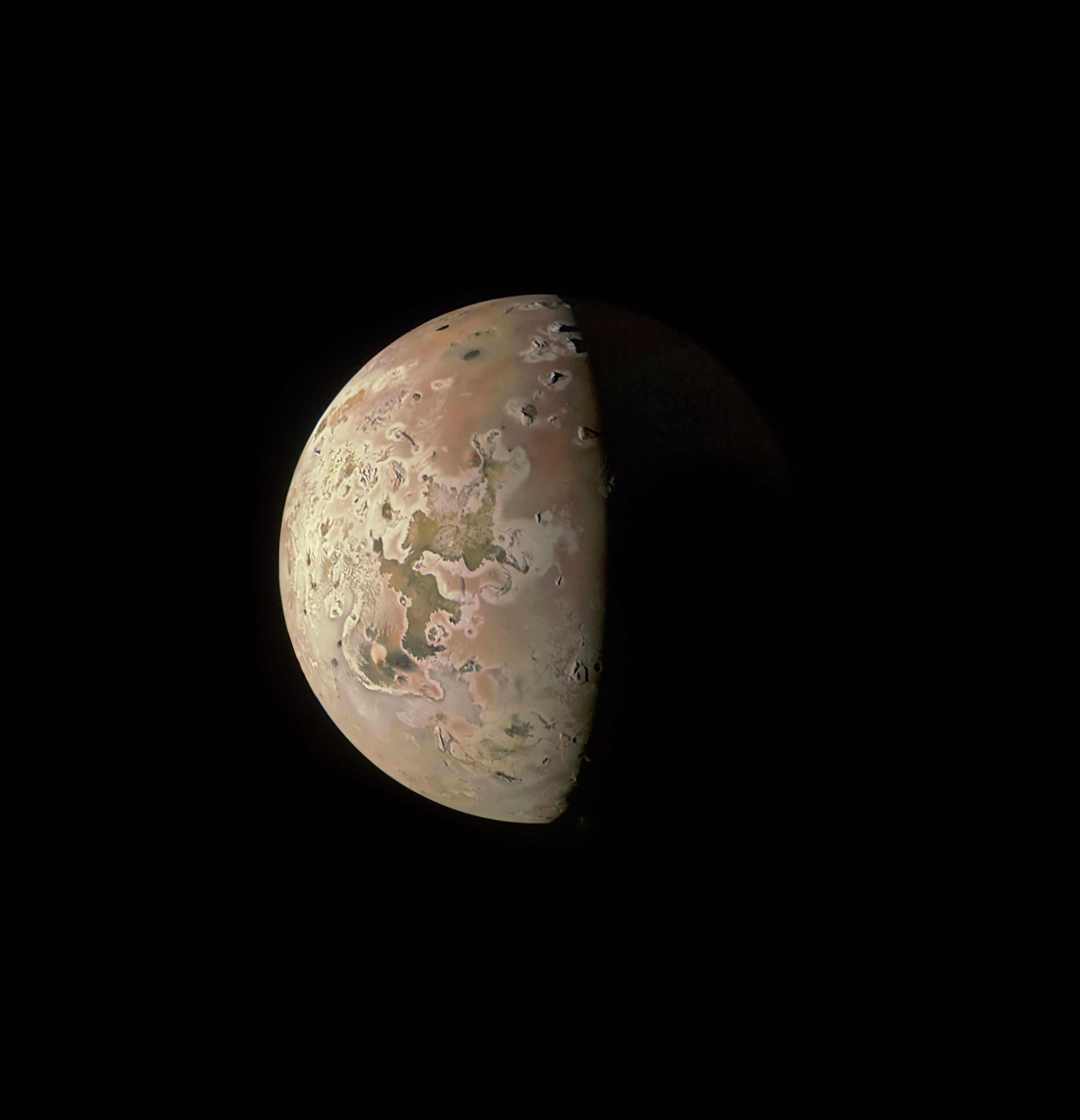
NASA’s Juno to Get Close Look at Jupiter’s Volcanic Moon Io on Dec. 30
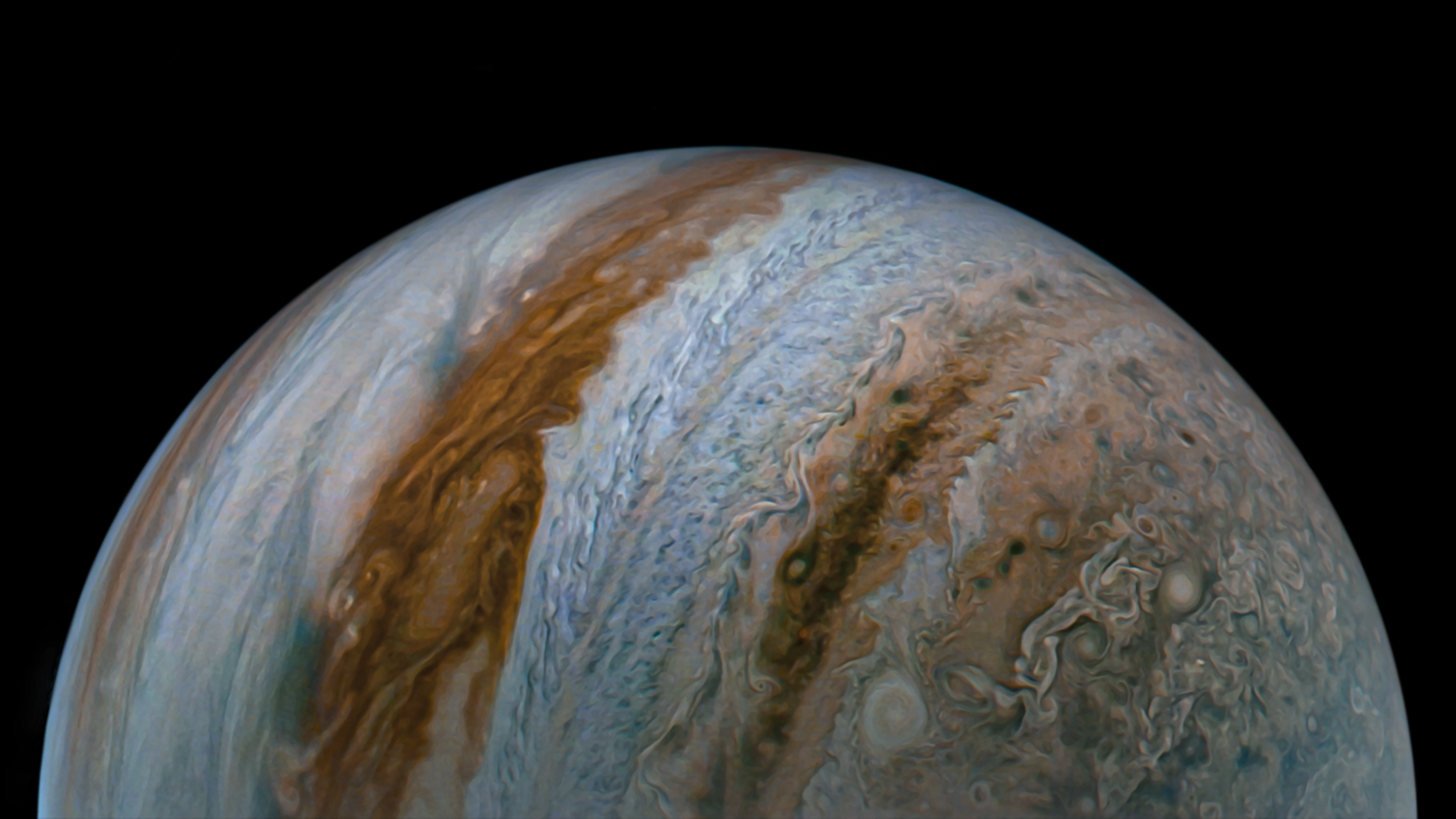
NASA’s Juno Finds Jupiter’s Winds Penetrate in Cylindrical Layers
Juno's Io Encounters
Consecutive flybys of Jupiter's moon Io – the most volcanic world in our solar system – offered the nearest view since the Galileo orbiter visited in 2001.
Juno had monitored Io from afar since the spacecraft arrived at Jupiter in 2016. Then, as part of its 57th and 58th orbits around the giant planet, Juno came within roughly 930 miles (1,500 kilometers) of Io's surface – less than the distance between Los Angeles and Seattle. The close passes, on Dec. 30, 2023, and Feb. 3, 2024, allowed scientists to compare data and images from these visits with previous observations that Juno and other craft made of this volatile world, slightly larger than Earth's Moon. Io is caught in a tug-of-war between Jupiter's powerful gravity and the smaller pull from two neighboring moons, churning its insides and creating eruptions and lakes of lava that cover its surface. Meanwhile, the gravitational pull Io exerted on Juno during the Feb. 3 flyby has reduced the spacecraft’s orbit around Jupiter to 33 days. It originally had been circling Jupiter and its environs in 53-day orbits, after it arrived at the king of planets on July 4, 2016.
Read More About the Dec. 30 Flyby
Jupiter's Volatile Moon, Io
The turbulent world is dotted with hundreds of volcanoes, some erupting so powerfully they're visible with large telescopes on Earth
The moon – one of four that astronomer Galileo Galilei discovered to be orbiting Jupiter in 1610 – is caught in a gravitational tug-of-war between its sibling moons, Europa and Ganymede, and the massive Jupiter. This creates tremendous tidal forces, like ocean tides on Earth, but which cause Io's solid surface to bulge up and down (or in and out) by as much as 330 feet (100 meters).
Read More About Io
Image processing by Alain Mirón Velázquez © CC BY

